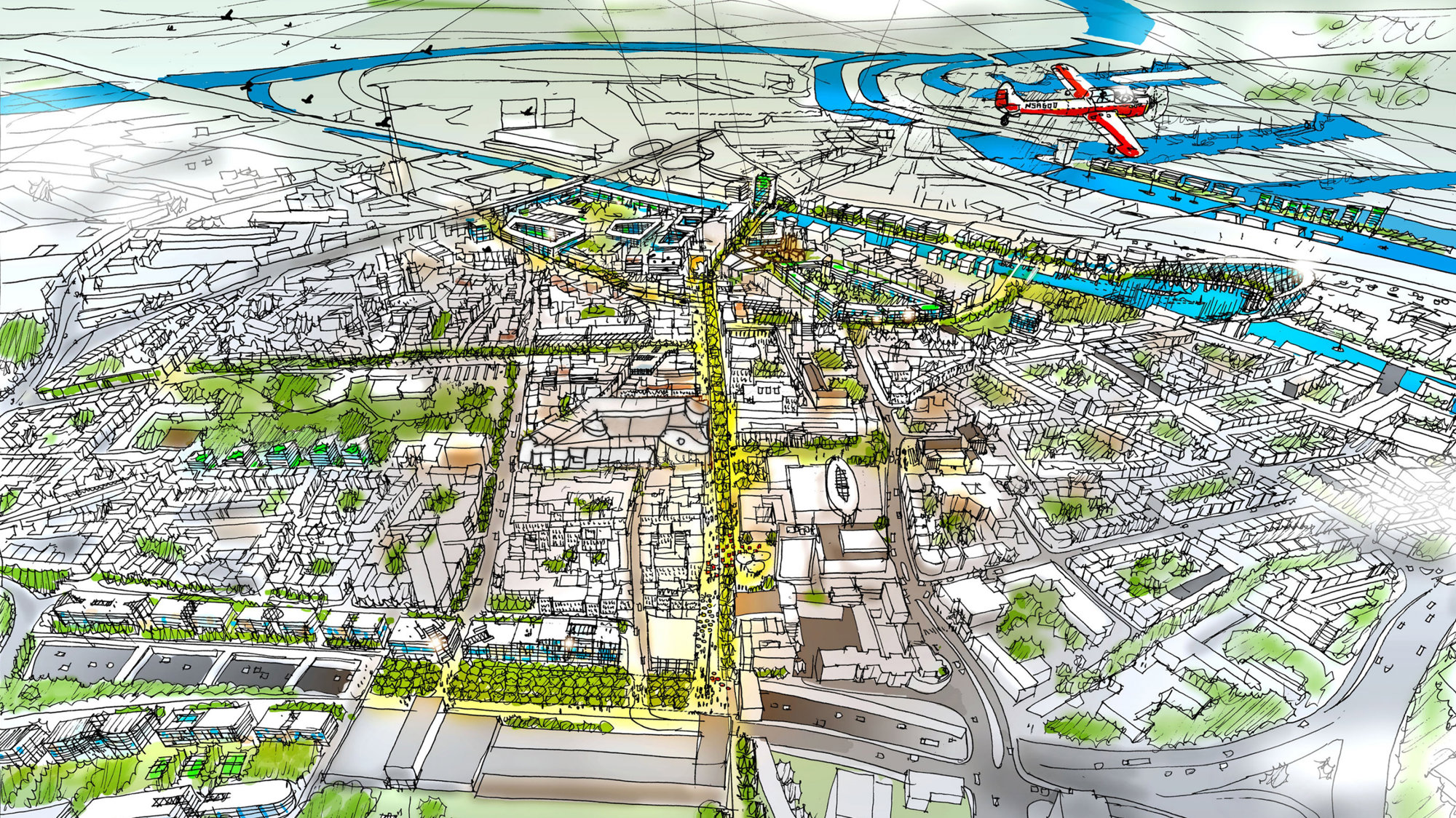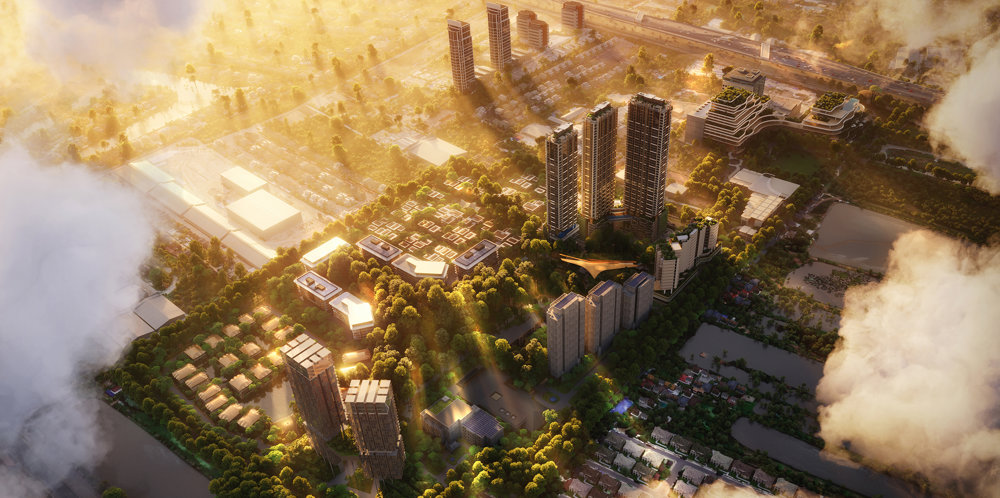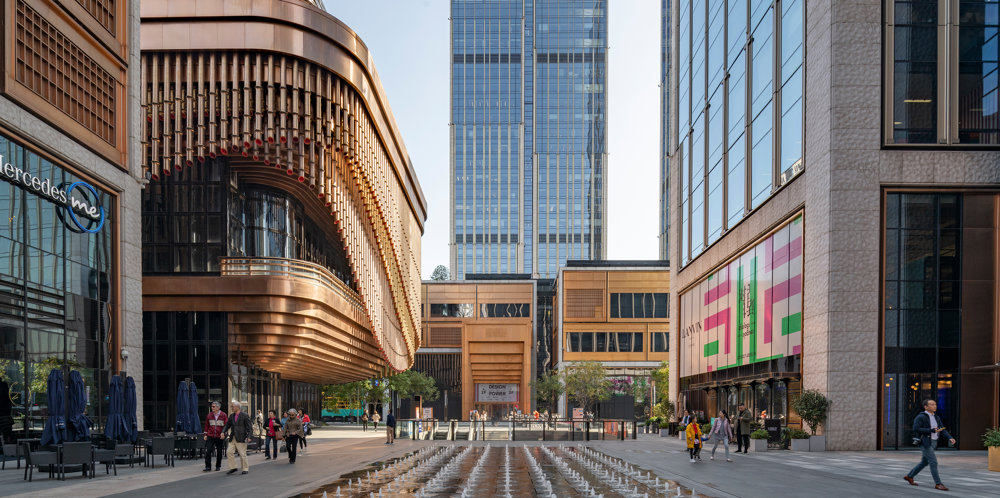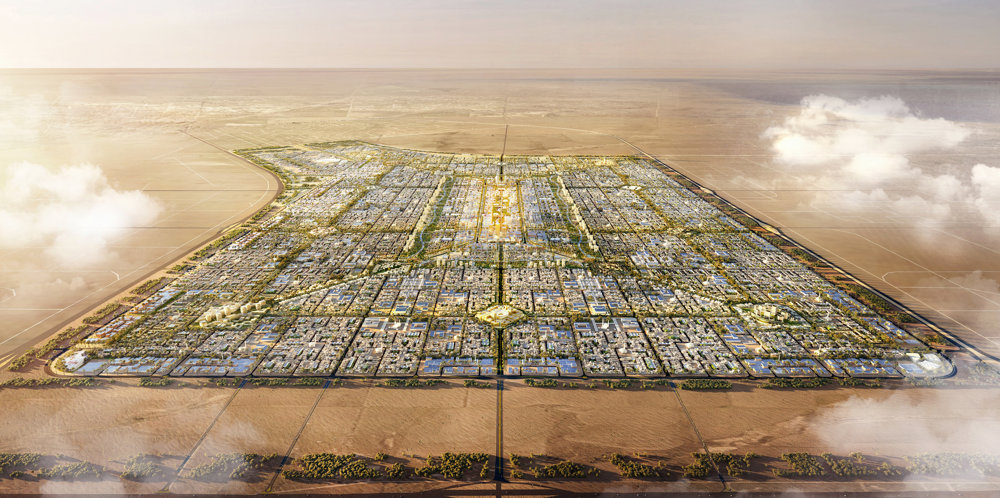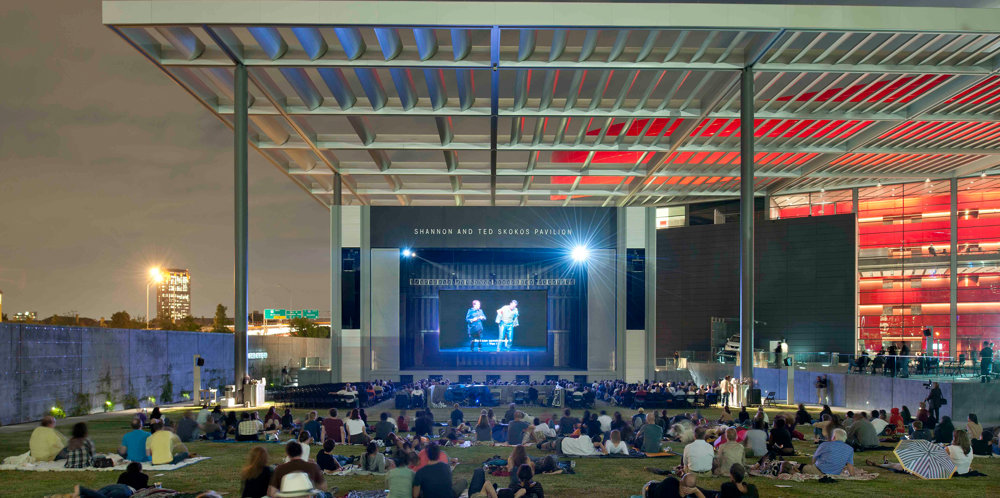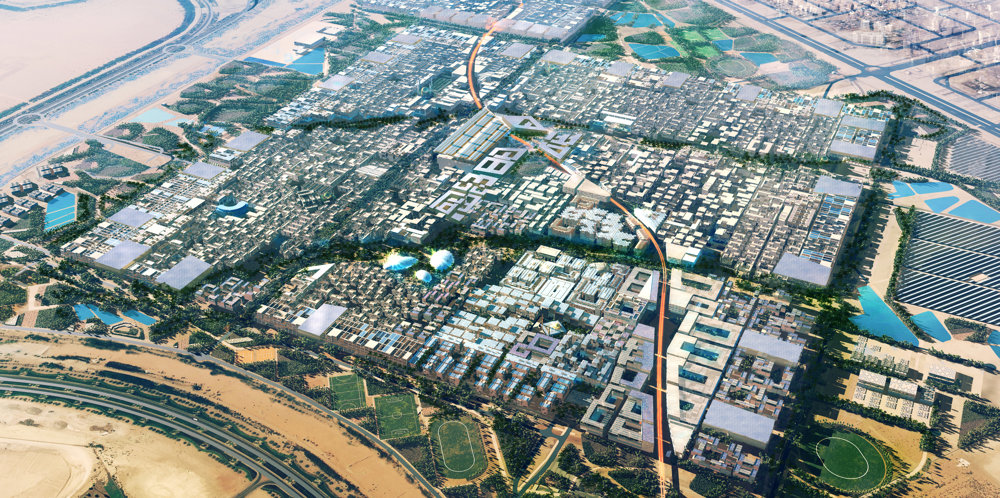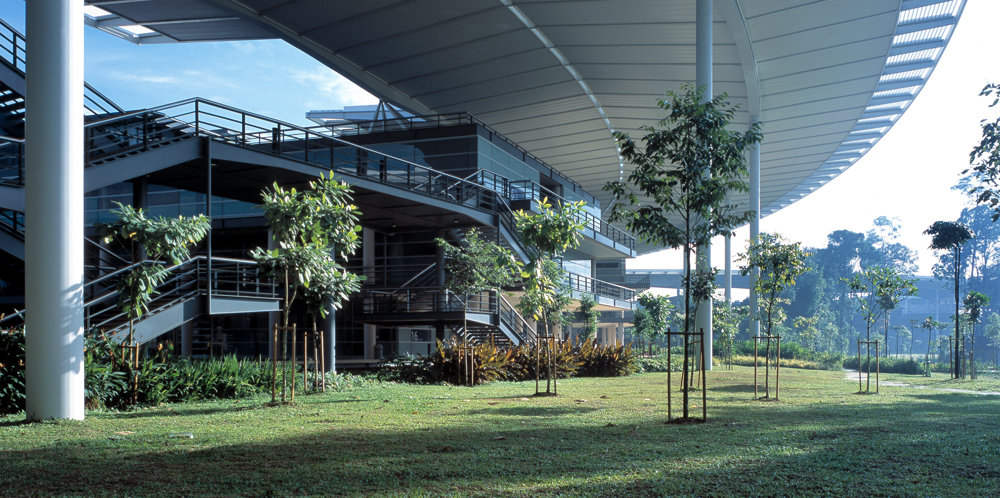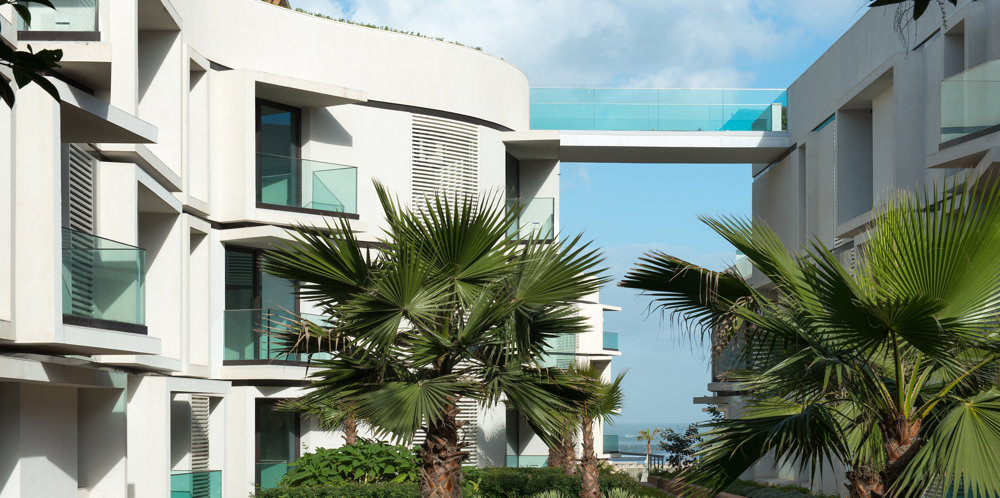The new masterplan for the inner city of Duisburg builds on the success of Foster + Partners' Inner Harbour redevelopment and will strengthen Duisburg's transformation into a vibrant, green and sustainable city.
Duisburg is part of a metropolis and faces competition from regional shopping centres and surrounding cities. In order to be competitive, and to develop its identity, it must attract a well balanced mix of culture, business and residents. The masterplan aims to strengthen the inner city as a local and regional focus for retail and leisure, and consequently increase its density. This will create a sustainable urban environment where rich mixed-use activity supports population growth and greater reliance on public transport, bicycles and walking.
A regional population of 11.1 million people live just an hour away, placing Duisburg in a sound position. As Germany's second most well-connected city, a main catalyst for the masterplan lies in developing existing links between public transport infrastructures. It is envisaged that the central retail area along the Königstrasse spine will extend and connect with an improved central railway station and the interchange for private and public transport.
The masterplan offers extensive new areas for development that are primarily residential, but also include offices, retail, cultural and leisure facilities. As a result, the inner city population is expected to increase by 25 per cent, encouraging regeneration and attracting a wider socio-economic mix. At the northern boundary of the shopping area, the Rathausplatz will be reclaimed from parking and traffic spaces to become again a central urban focus for the regenerated historic fabric. New landmark buildings at key entry points to the inner city will signal Duisburg's ambition and will assert its presence.
Part of Duisburg's 114km of water frontage has already been transformed in the Inner Harbour area from an underused industrial wasteland to an attractive, diverse urban environment. Similarly, new residential developments in the inner city will be formed along the waterfront and around generous landscaped spaces creating intimate, inviting places for urban dwellers to enjoy.
Drawing on Duisburg's extensive infrastructure and possibility for increased inner city use, as well as an improved environment, the masterplan promotes an attractive sustainable city to dwell in.









